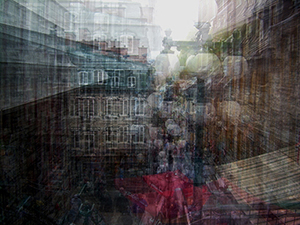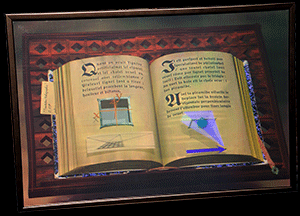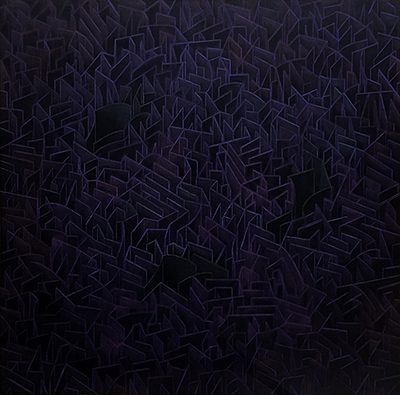|
A labyrinthine experimentation of images
|
|
|
|
For centuries, three-dimensional space has been
represented using linear perspective. It is in our
images, in our language, in our cameras, in our computer
graphics software. Cyclopean vision, partial,
conventional, from a single point of view at the center
of the world, traditional perspective is a shackle. Yet: |
|
“The front view of a mountain has one
aspect; the side view another; the back view still
another. The ever changing view from whatever side one
looks is described as “different shapes of a mountain as
seen from every side.” Thus a single mountain combines
in itself several thousand appearances. Should we not
realize this fact?”
Kuo Hsii, 1117,
Lin Ch’üan Kao Chih
(Lofty
Messages of Forests and Springs)
|
What is seen is perceived in multiple aspects.
Observation is an action in motion. Constant variations
of angles of view proceed from this movement. Chaotic
vision, the gaze is deployed in space and time, a
succession of places and moments, an accumulation. These
elongated voyages in images derive from methodologies
that are not only representations “of” space, but also
representation “in” space. |

The
forgotten labyrinth,
2016, graphite
on paper in an accordion sketchbook, 765cm X 50cm. |
The experimentation of images made from movement is
developed in paths where the pencil and optics collect
unsettled forms, imaginary or observable. In addition,
the experimental analysis of artistic images, of their
formation, presentation and perception, distinguishes
itself by its ability to use the unexpected and by its
openness to creative manipulations. In the amalgam of
multiple images, fragmentation, distortion and
transparencies emerge. Confusing forms that arise from
movement and multiple perspectives are temporal
compressions. They show the incoherence of time in a
fixated space. |
|
“Tempus
non est sine motu.”
(Time
doesn’t exist without movement.)
Roger Bacon, 1267,
Opus Majus.
|
 |
 |
Descending the staircase (Quebec),
2017,
Digital photography. |
23 views on a cuboctahedron,
2016,
3D computer graphics. |
Optics is spatial. Liberated from the surface,
multi-perspectives appears in synthetic holography.
Hundreds of images that coincide with as many angles of
view to represent a three-dimensional space. This
multiplicity reconstructs the observational motion
parallax. In front of these holograms, the observer’s
movements initiate three-dimensionality and kinetics,
spatial synchronisations and temporal incoherence. What
we see from here is different from what we see from
there. |


Tractatus Holographis,
2005,
two angles of view on the synthetic hologram,
60cm X 40cm. |
Old books and diffractive optics, drawings inspired form
oriental painting, catoptrics and anti-perspective,
obscure references and distant quotations, these
anachronic dispositives are spaces that combine past
within present and present within the past. This
experimental practice reflects the heterochrony in art
history research. With these optical and geometrical
structures, by their historical references and their
visual effects, I create these images to
visualize
fragmentations, intersections and meanders of spaces and
times, real and imaginary. |
“ Fairies +
facts = effect”
Louis Scutenaire
(1984)
Mes
Inscriptions 1945-1963.
|
Cities and landscapes are mazes, chaotic meanders that
images can represent only in reduction and ephemerality.
My images are submitted to the requirements and hazards
of experiments that sustain a labyrinthine conception of
space affected by the turbulence of moving gaze, walking
and chaotic perception. Compositions of voids and
solids, shadows and light, lines and clouds, obstacles
and bypasses, from a labyrinthine vision of space,
liberated from an egocentric geometry - the gaze
wanders. |
 |
|
Maze,
2019,
ink on wood,
125cm X 123cm. |
Jacques Desbiens
July 2019 |
|

